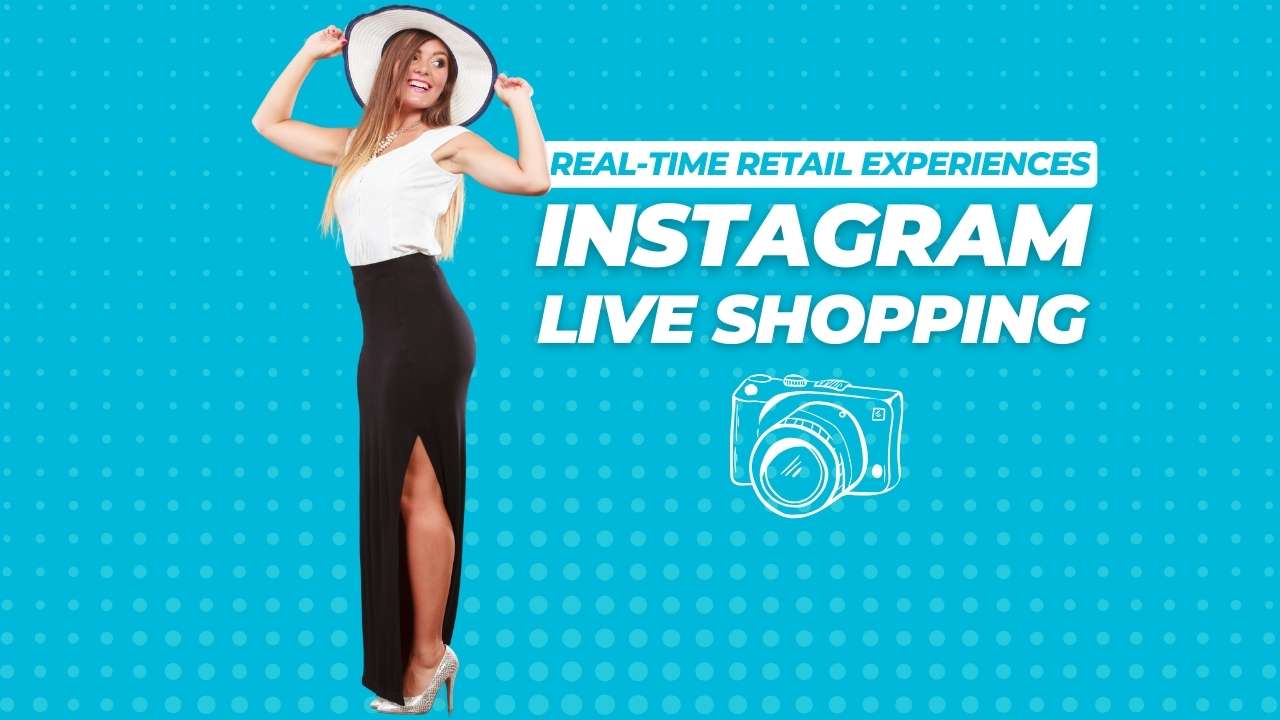Over recent years, the allure and charm of bygone eras have been making a grand resurgence in our wardrobes. The fascination with vintage clothing has surged, capturing the attention of fashion enthusiasts and trendsetters across the globe. Characterised by high-quality fabrics, unique designs, and a nostalgia-infused aesthetic, vintage pieces are cherished for their timeless appeal and their capacity to make a statement in the sea of mass-produced fashion.
Shopping for vintage clothing, however, isn’t as straightforward as your regular retail experience, particularly when it comes to navigating the digital marketplace. The online realm, while offering vast collections and the convenience of home shopping, also presents unique challenges. From verifying authenticity and understanding vintage sizing to finding reliable sellers, there’s a myriad of factors to consider.
Yet, the rewards of successful online vintage shopping are plentiful. There’s the thrill of uncovering a one-of-a-kind piece, the joy of owning a slice of fashion history, and the satisfaction of contributing to a more sustainable way of consuming fashion. This article aims to guide you through your online vintage shopping journey, providing insights and tips to help you curate a stylish, individualistic, and eco-conscious wardrobe.
Understanding Vintage Clothing
Before delving into the intricacies of online shopping, it’s essential to understand what exactly defines ‘vintage clothing’. In the world of fashion, the term ‘vintage’ typically refers to garments that originated from a previous era, often (but not strictly) between 20 and 100 years old. These clothes have stood the test of time, not only in terms of durability but also in their enduring style.
Over the decades, each fashion era has had its distinct trends and signature looks. The roaring ’20s are remembered for their flapper dresses and cloche hats, while the 1950s are synonymous with full skirts and cinched waists, ushered in by the likes of Dior’s New Look. The ’60s brought us mini skirts and mod fashion, and the ’70s are famed for their bohemian maxi dresses and vibrant disco attire. Meanwhile, the 1980s and ’90s introduced us to a range of trends from power suits, shoulder pads, and high-waisted denim, to grunge and streetwear.
Shopping for vintage clothing is not merely about fashion. It’s also a nod to cultural history, as each piece encapsulates the zeitgeist of its original era, embodying the trends, societal norms, and events of that time. Additionally, vintage shopping carries significant environmental benefits. By choosing vintage, you are repurposing existing garments rather than contributing to the demand for new, often unsustainably produced, items. This approach aids in reducing fashion waste and carbon emissions, making vintage clothing a much more environmentally-friendly choice. This blend of history, style, and sustainability is what truly sets vintage clothing apart in the fashion universe.
Why Shop Online for Vintage
While rummaging through local charity shops or vintage stores can certainly feel like a treasure hunt, shopping for vintage online offers an unmatched level of convenience and variety. The internet is a boundless marketplace, allowing access to vintage stores from across the globe right from the comfort of your home. Whether you’re searching for a 1920s flapper dress, a ’70s suede jacket, or an ’80s power suit, there’s a strong chance you’ll find it online.
Online vintage shopping offers a 24/7 availability that physical stores simply can’t compete with. Night owl or early bird, you can explore vintage treasures at any hour that suits you. Plus, online platforms frequently update their collections, meaning there’s always something new to discover.
The COVID-19 pandemic may have also played a role in bolstering online vintage shopping. With high street shops temporarily shuttered and people spending more time at home, many turned to online shopping as a safer and more convenient alternative. This transition further expanded the reach of online vintage retailers, allowing them to connect with a larger audience who may not have had easy access to physical vintage stores.
Furthermore, the pandemic brought about a significant shift in consumer attitudes, with many people becoming more mindful of their shopping habits. The sustainable ethos of vintage shopping resonated with these consumers, providing an eco-friendly alternative to fast fashion while still satisfying their desire for unique and stylish garments. In this way, the pandemic inadvertently served as a catalyst, driving more people to explore the online vintage marketplace.
How to Identify Authentic Vintage Clothing Online
Online vintage shopping can be thrilling, but it also requires a keen eye and a bit of detective work to ensure the pieces you’re purchasing are truly vintage. Here are some tips to help you distinguish authentic vintage items from vintage-style reproductions.
Characteristic Styles, Fabrics, and Labels of Different Eras
Understanding the characteristic styles, fabrics, and labels of different fashion eras can go a long way in verifying a garment’s authenticity. Each era had its signature styles and materials. For example, nylon wasn’t invented until the 1930s, so a ’20s dress advertised as nylon is likely not authentic. Likewise, labels can provide clues; union labels, which indicate a garment was made by a workers’ union, were common in clothes produced from the ’40s to the ’70s.
Garment Construction
Garment construction techniques also changed significantly over time. For instance, pinked seams (zig-zag edges) were commonly used until the mid-20th century, while serged seams (overlocked edges) became standard later on. Metal zips were typically used until the ’60s, after which plastic zips became more common. These small details can offer insights into the garment’s age.
Clothing Labels
Finally, the clothing label itself can be a treasure trove of information. Brand labels can be researched to see when they were in operation or when their logos changed. Country of origin labels can also provide hints; for instance, ‘Made in West Germany’ indicates the item was made between 1949 and 1990.
However, do bear in mind that these are just guidelines and not foolproof methods. If in doubt, don’t hesitate to reach out to the seller for more information. A reputable vintage seller should be more than willing to provide additional details or photos to assist in your purchase decision.
Shopping Smart – Understanding Sizing and Condition
Sizing Differences
Shopping online for vintage clothing involves another unique challenge: understanding sizing. It’s essential to remember that vintage sizing often differs significantly from contemporary standards. For example, a size 12 garment from the 1950s is likely much smaller than a size 12 today. This difference is due to changes in body types and sizing standards over the years, a phenomenon known as ‘vanity sizing’.
The best approach is to ignore the size label and focus instead on the garment’s actual measurements. Most online vintage retailers provide detailed measurements for each piece. It’s helpful to have your own measurements handy for comparison. Remember to consider the type of clothing and the desired fit – you might need extra room for movement in a jacket, for example.
Condition Reports and Communication with the Seller
The condition of vintage pieces can vary greatly, from ‘mint’ (like new) to ‘fair’ or ‘poor’. Reputable online vintage stores will provide a condition report for each item, describing any flaws such as stains, tears, or alterations. It’s crucial to read these reports carefully to avoid any surprises when your purchase arrives.
Don’t hesitate to communicate with the seller if you have questions or need additional photos of a garment. They are usually happy to assist, and it can help you make a more informed decision.
Alteration Services
Even with careful measurement matching, you may find that your vintage item isn’t a perfect fit. This is where alteration services come in handy. Many vintage clothing enthusiasts build a relationship with a trusted tailor who can modify their finds. A simple adjustment, like taking in a waist or shortening a hem, can transform a vintage piece into a custom-fitted gem. By considering potential alterations, you can expand your options when shopping online for vintage clothing.
Finding Reliable Online Vintage Retailers
Navigating the online vintage clothing landscape can be daunting, particularly when it comes to discerning which retailers are trustworthy. Here are a few pointers to help you identify reputable sources for your vintage shopping needs.
Identifying Trustworthy Websites
A trustworthy vintage clothing website will provide comprehensive information about each garment, including accurate measurements, material details, era, and condition. High-quality, clear photographs from multiple angles are also a hallmark of a reliable retailer. Transparency about their return policy and shipping methods is another good sign.
Customer Reviews and Seller Ratings
Customer reviews and seller ratings are invaluable resources when gauging the reliability of an online vintage retailer. They can provide insights into the accuracy of item descriptions, the quality of customer service, and the overall shopping experience. Be wary of stores with consistently low ratings or negative reviews.
Popular UK-Based Online Vintage Clothing Retailers
In the UK, several online retailers have earned a reputation for their quality vintage offerings. Some popular names include Beyond Retro, Rokit, and Oxfam’s Online Shop. These stores not only boast a wide range of vintage clothing but also demonstrate a strong commitment to sustainability.
Beyond Retro, for instance, rescues over 600 tonnes of used clothing from waste each year, carefully selecting and curating their vintage offerings. Rokit began as a Camden Market stall in the 1980s and has grown into one of the UK’s leading vintage clothing retailers, known for its eclectic selection. Oxfam’s Online Shop offers a unique mix of donated items and unsold stock from their high street shops, providing a charity shop experience online.
These online stores exemplify the potential for vintage shopping to be both stylish and environmentally responsible, making them excellent starting points for your online vintage shopping journey.
Ethical Considerations
When shopping for vintage clothing, particularly online, it’s worth considering not only the stylish appeal of these unique pieces but also the larger ethical implications.
Sustainability Aspect of Vintage Shopping
Vintage shopping is inherently sustainable. By purchasing vintage clothing, you’re choosing to repurpose existing garments rather than buying new ones. This choice helps reduce the demand for new clothing production, which is often linked to harmful environmental practices and labour exploitation. Furthermore, by extending the life of these clothes, you’re directly combating the problem of textile waste, a significant issue in our current ‘throwaway’ culture.
Impact of ‘Fast Fashion’ Versus Longevity of Vintage Clothing
Fast fashion – the practice of mass-producing inexpensive, trend-driven clothes – has come under scrutiny in recent years for its environmental and social impact. These clothes are often worn only a few times before being discarded, contributing to significant waste. Moreover, the rapid production cycles put pressure on factory workers, often leading to poor working conditions.
In contrast, vintage clothing represents longevity and quality. These items have already withstood the test of time, often being well-made from durable materials. By investing in vintage pieces, you’re advocating for a slower, more conscious approach to fashion, where clothes are valued and cared for over the long term.
Role of Consumers in Promoting Ethical and Environmentally-Friendly Fashion
As consumers, we hold significant power in shaping the fashion industry. Each purchase we make is a vote for the kind of practices we want to support. By choosing to buy vintage, we’re signalling a demand for more sustainable and ethical fashion.
Furthermore, by sharing our choices and educating others about the benefits of vintage shopping, we can help spread awareness and encourage more people to make sustainable fashion choices. Ultimately, vintage shopping isn’t just about personal style; it’s also about participating in a larger movement towards a more ethical and sustainable fashion industry.
Final Thoughts
The online world of vintage clothing shopping is truly a fascinating one. As we’ve explored, it’s not just about curating a unique, individualistic style but also about understanding and appreciating the history and sustainability that comes with each vintage piece.
We’ve navigated through the defining aspects of vintage clothing, the benefits of shopping online, and the surge in online vintage shopping during the pandemic era. We’ve also addressed how to distinguish authentic vintage garments from reproductions, understand vintage sizing, and choose reliable online vintage retailers. Lastly, we delved into the ethical considerations of vintage shopping, highlighting the positive environmental impact and the role each of us plays in promoting sustainable fashion.
While online vintage shopping may initially seem daunting, armed with the right knowledge and a discerning eye, it can become an incredibly rewarding experience. As you embark on your online vintage shopping journey, remember to cherish the stories that each garment tells, enjoy the thrill of the hunt, and take pride in the conscious choice you’re making for a more sustainable and ethical fashion world.
In the world of vintage, the past isn’t outdated – it’s a rich source of inspiration and wisdom. So, embrace the charm of yesteryears and let it add an unforgettable dimension to your style. Happy vintage hunting!
Call to Action
Now that you’re equipped with the knowledge and tips for online vintage shopping, it’s time to dive in and start your own treasure hunt! Exploring the world of vintage fashion offers an exciting opportunity to develop a unique style, make sustainable choices, and even learn a bit about fashion history along the way.
Why not start today? Visit one of the online vintage stores mentioned in this article and take the first step on your vintage journey. Whether you’re searching for that perfect 1960s shift dress, a bold ’80s power suit, or a simple pair of high-waisted ’90s jeans, the world of vintage clothing is waiting to be discovered.
And we’d love to hear about your adventures in online vintage shopping! Feel free to share your experiences, favourite finds, or any questions you may have in the comments below. Remember, every vintage piece has a story to tell – and so does every vintage shopper. Happy shopping, and we can’t wait to hear about your vintage discoveries!















